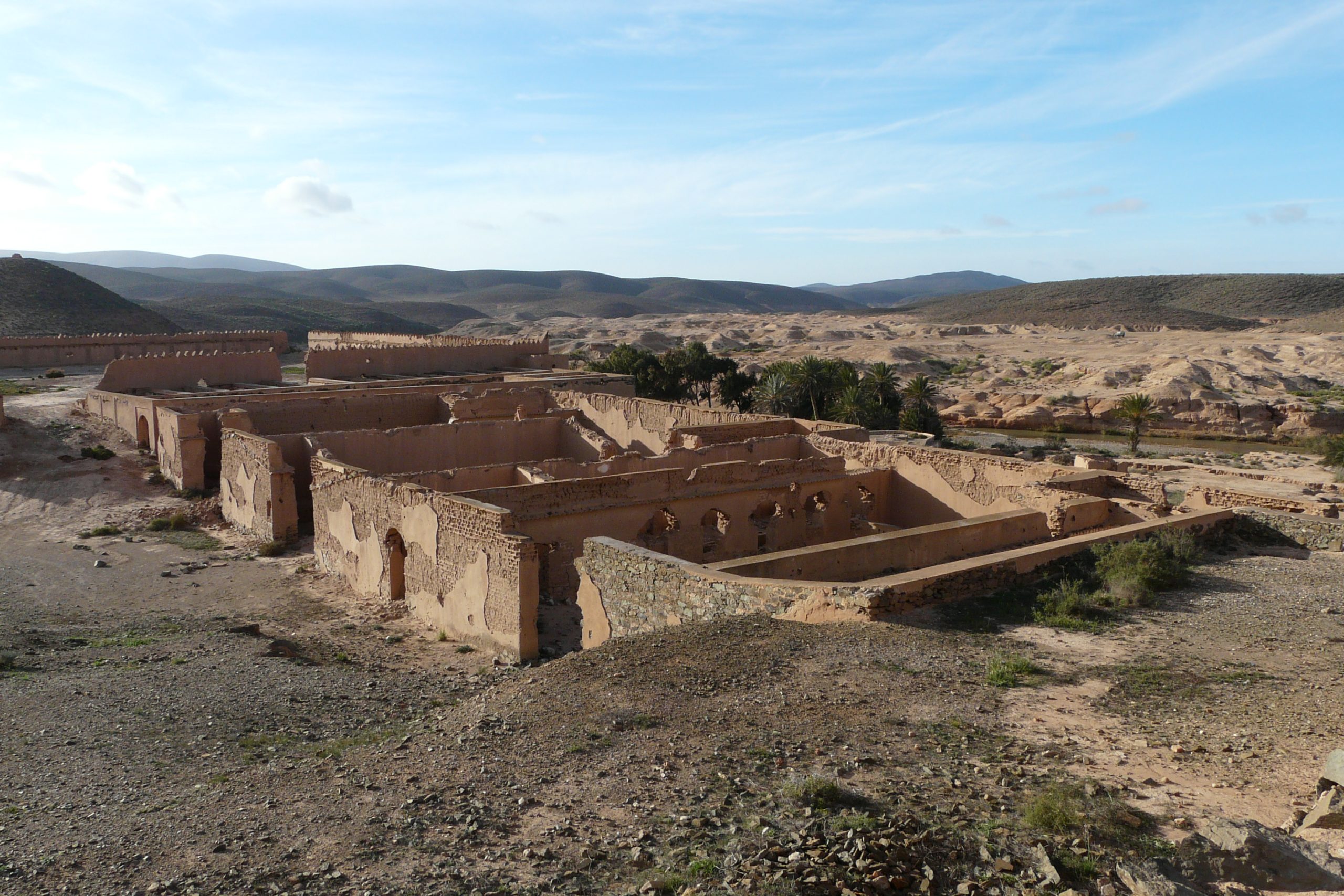Heritage
Enjoying symbolic, historical, artistic, aesthetic, ethnological, cultural and social meanings, the local heritage is declined under a double aspect, material and immaterial.
Material heritage
Azrou KlaneM
Reported as being one of the first rock sites reported in Morocco, Rabbi Mordecai reported its existence in 1875 and it is to him that the name Azrou Klane belongs. The site houses medieval engravings, representing among others a sailboat and anthropomorphic figures.
The Ministry of Culture has listed no less than 142 other sites in the region, including 12 rock painting sites and 130 rock engraving sites dating back to the dawn of time.
Sharpen
Considered to be the historic core of Guelmim, whose origins date back to the 18th century, this stronghold is located on the heights of the city, which allows a view of the entire territory. Rectangular in shape, it consists of two levels: an upper floor and a lower floor.
The home of Abdine Ould Birouk
It includes a part dedicated to the reception of guests, called in local patois “Douiria” each of these houses constituting it contains a tower which bears the name of the owner. It is largely inspired by the characteristic architecture of the city of Fez.
Lagzar:
Originally conceived as an extension of Agouidir, designed in the 18th century for the needs of surveillance and storage of provisions. Part of the building, called “the Casbah” was dedicated to housing the notables of the city.
Agadir O’trime
Remains of an old stronghold. We can detect a few artifacts made mainly of shards of pottery that still bear witness to a prosperous past that the history of the city has known.
Palace of Sidi Boudmia
Founded at the end of the 17th century by Abou Hassoun Semlali, it testifies to the political ambition of the latter to establish a dynasty in southern Morocco. Abandoned since, its remains have a purely historical value.
The Tagaouste Site (the current Laksabi)
The site is made up of a set of garrisons and foundations that bear witness to the commercial role played by the region in past centuries. It acted as a relay for caravanners who ensured trade between Morocco and sub-Saharan Africa.
Intangible heritage
Gastronomy
The perfect place to sample traditional desert dishes, especially those made from the tender and delicious camelina meat so beloved by the locals. The consumption of this meat is an integral part of the traditions inherited from the desert, and an essential aspect of the nomadic way of life.
You will have the unique opportunity to taste this type of meat through “Al-Tabikha”, a dish cooked locally on embers in olive oil in a large pot (called “salta”) . After thorough cooking, the meat is accompanied by a type of couscous called “Khammas” or rice cooked over low heat and served mixed with a sauce called “maru”.
arts and culture
The “Gadra” dance is widely known among the inhabitants of southern Morocco. With African roots, it is part of the percussive arts where sound and body expression are in harmony, the performance causes a collective spectacle based on song and dance”.

